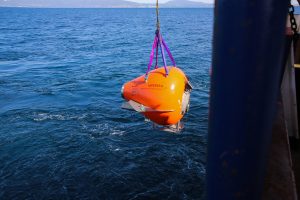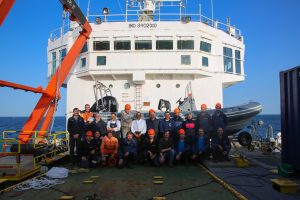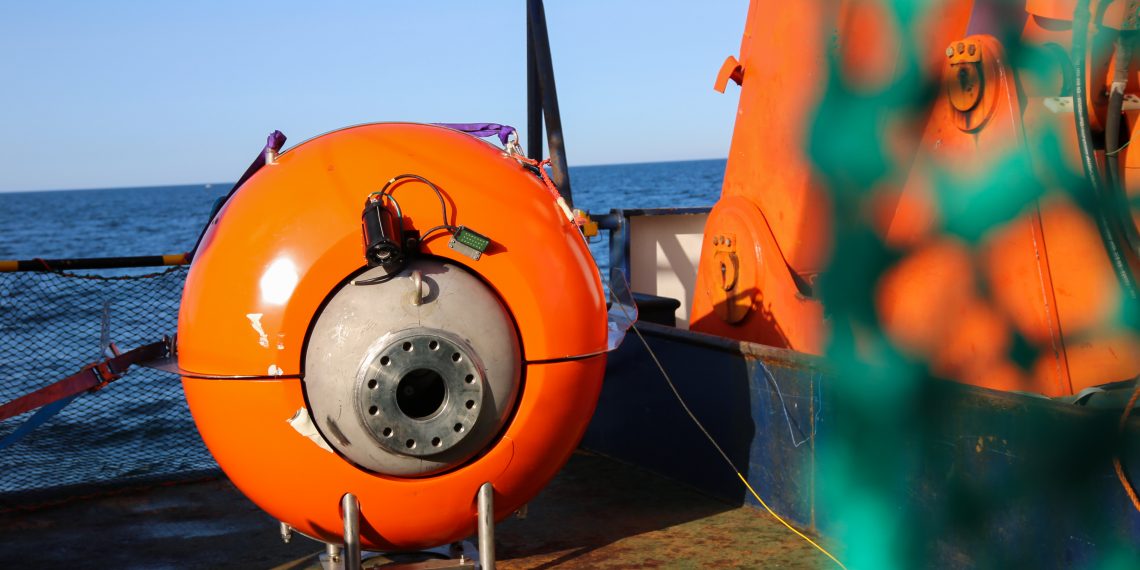Researchers from INESC TEC, A. Silva Matos Metalomecânica, Porto’s School of Engineering (ISEP), the Portuguese Institute for Sea and Atmosphere (IPMA) and the Interdisciplinary Centre of Marine and Environmental Research (CIIMAR) developed a system dedicated to the collection and life-support of species up to 1000 meters deep, within the scope of the HIPERSEA project. This solution enables bringing the species to the surface without any damage caused by pressure differences and keeping them alive for further studies. The first tests took place in April and May, aboard the Mário Ruivo research vessel.
The solution will increase the knowledge of species living in the mesopelagic area of the ocean, 200 to 1000 metres below surface. Despite being rich in terms of biodiversity and registering the largest biomass, it’s still relatively unknown.
“Knowledge of deep-sea species remains insufficient. However, the first research programmes focused on said resources showed that these marine organisms have significant potential to the pharmaceutical and food industries”, explained Diana Viegas, researcher at INESC TEC’s Centre for Robotics and Autonomous Systems (CRAS).
According to Antonina dos Santos, IPMA researcher leading the campaign, the project focused on the development of a collection and life-support system for species, which will increase the knowledge of the life cycle and biology of deep-sea animals. “This campaign aimed to test the ability to capture living organisms from the seabed and the water columns at different depths, up to a maximum of 1000 metres, and then transfer them to a hyperbaric chamber at the surface, while safeguarding their physiological conditions”, she stated
The project’s components include a hyperbaric mobile infrastructure that allows the collection of living organisms in the deep sea – under high pressure, low temperature (or extremely high, in the case of close active volcanoes or hydrothermal sources) and reduced light conditions – and an infrastructure that transfers them to another hyperbaric chamber, which mimics the seabed environment (namely in terms of the physical parameters relevant to preserve the life of the species, thus acting as an aquarium).
“This equipment includes components that control the chemical parameters that sustain organisms within the hyperbaric system, e.g., pressure, temperature, light, food, corrosion and salinity”, concluded the researcher, emphasising the importance of this solution.
Moreover, the tests were crucial to demonstrate and validate the hyperbaric systems, its features and behaviour. “We’re able to validate the system’s functionality and ability to collect deep-sea species. The first demonstration also enabled the collection of information about operationalisation, launching and collection procedures, vital to optimise the system, develop new versions and adapt the technology to the needs of Portuguese institutions and the country’s context”, said Alfredo Martins, CRAS researcher.
The system was developed within the scope of the project “HIPERSEA – COLLECTION AND LIFE SUPPORT IN A HYPERBARIC SYSTEM FOR DEEP-SEA ORGANISMS” (POCI-01-0247-FEDER-033889), funded by the COMPETE 2020 programme (approximately €3M).


The researchers mentioned in the news piece are associated with INESC TEC and IPP-ISEP.




 News, current topics, curiosities and so much more about INESC TEC and its community!
News, current topics, curiosities and so much more about INESC TEC and its community!